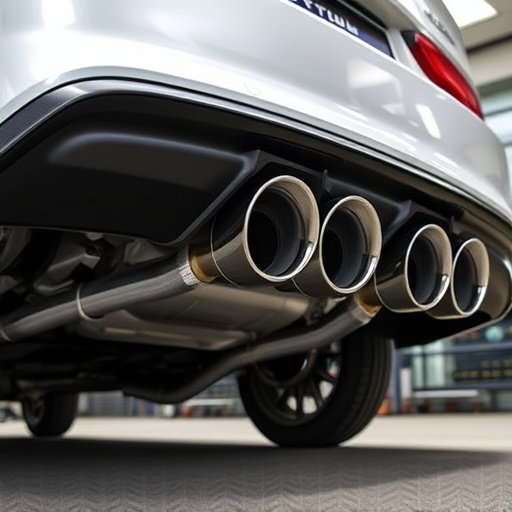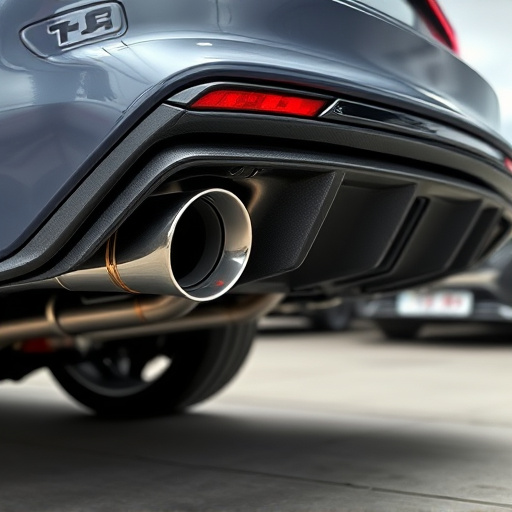Intake Manifold Upgrade: Achieving Cylinder-to-Cylinder Balance for Optimal Engine Performance
An intake manifold upgrade is a strategic modification that improves engine performance by enhancing…….
In the ever-evolving landscape of automotive engineering, the intake manifold plays a pivotal role in an engine’s overall performance and efficiency. An intake manifold upgrade involves enhancing or replacing this critical component to optimize air and fuel delivery to the engine cylinders. This article delves into the intricacies of intake manifold upgrades, exploring their definition, global impact, technological innovations, economic implications, and future prospects. By the end, readers will gain a comprehensive understanding of why these upgrades are essential in today’s automotive industry and how they contribute to both environmental sustainability and performance excellence.
An intake manifold upgrade is the process of modifying or replacing the intake manifold, which is a crucial part of an internal combustion engine. It serves as the conduit for atmospheric air entering the engine, ensuring a precise mixture of air and fuel before ignition. Key components within an intake manifold include:
The concept of intake manifold optimization dates back to the early 20th century when engineers sought ways to improve engine efficiency. Over time, advancements in materials science, computational fluid dynamics (CFD), and manufacturing technologies have enabled more sophisticated intake manifold designs. Today, these upgrades are integral to high-performance vehicles, sports cars, and even everyday drivers who seek improved fuel economy and reduced emissions.
Intake manifold upgrades are a key component of broader engine development strategies:
The global impact of intake manifold upgrades is profound, with major automakers and aftermarket suppliers driving innovation across diverse regions:
The global intake manifold upgrade market is dynamic, driven by factors such as:
Automakers allocate significant resources to research and development (R&D) of intake manifolds, with particular focus on:
Recent technological advancements have revolutionized intake manifold design and functionality:
Looking ahead, technology will continue to shape the future of intake manifold upgrades:
Key policies and regulations influence the development and adoption of intake manifold upgrades:
These policies have a profound impact on intake manifold upgrade strategies:
BMW implemented Valvetronik, a variable valve timing system, which optimizes intake manifold performance across the entire engine speed range. This technology enhances torque delivery and fuel efficiency while reducing emissions. The case study highlights the success of combining advanced electronics with precise mechanical design to deliver exceptional engine performance.
Ford Motor Company introduced the EcoBoost engine, featuring both direct injection and turbocharged charging. This upgrade significantly improved fuel economy without compromising power output, setting a new standard for downsized engines in high-performance vehicles. The case underscores the benefits of integrating multiple technologies for optimal efficiency.
Toyota’s hybrid vehicles utilize specialized intake manifolds designed to optimize both conventional and electric powertrains. These manifolds incorporate advanced materials and design features to enhance fuel economy and reduce emissions, demonstrating a successful fusion of internal combustion and electric vehicle technologies.
Automakers should focus on:
The intake manifold upgrade is a dynamic and critical aspect of modern automotive engineering, with significant global implications. From performance enhancement and fuel efficiency improvements to reduced emissions and advanced materials integration, these upgrades drive the industry forward. As technology continues to evolve, automakers must embrace innovation, collaborate across sectors, and prioritize sustainability to meet the demands of a changing market and regulatory landscape. By doing so, they can ensure that intake manifold upgrades remain a cornerstone of automotive excellence while contributing to a cleaner, more efficient future.
Q: How do intake manifold upgrades affect fuel economy?
A: Intake manifold upgrades, especially those employing advanced porting designs and variable valve timing, can significantly improve fuel economy by enhancing combustion efficiency and reducing internal engine friction.
Q: Are intake manifolds expensive to replace?
A: The cost varies depending on the vehicle and the complexity of the upgrade. Basic upgrades might be relatively affordable, while highly specialized or performance-oriented manifolds can be quite expensive.
Q: Can intake manifold upgrades improve engine reliability?
A: Yes, thorough design, manufacturing, and quality control measures ensure long-term reliability. Advanced materials and precise engineering minimize the risk of failure or degradation over time.
Q: How do emissions regulations impact intake manifold designs?
A: Emissions standards drive the development of cleaner combustion technologies, such as direct injection and precise fuel metering, which are key aspects of modern intake manifolds.
Q: Are there any environmental concerns with advanced intake manifolds?
A: While these upgrades generally aim to reduce emissions, the production and disposal of specialized materials require careful management to minimize environmental impact. Responsible manufacturing practices and recycling programs address these concerns.

An intake manifold upgrade is a strategic modification that improves engine performance by enhancing…….

An intake manifold upgrade significantly improves throttle response and vehicle performance by enhan…….